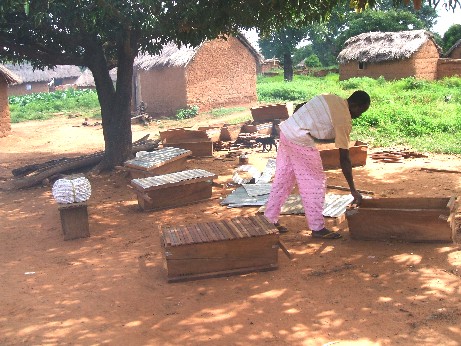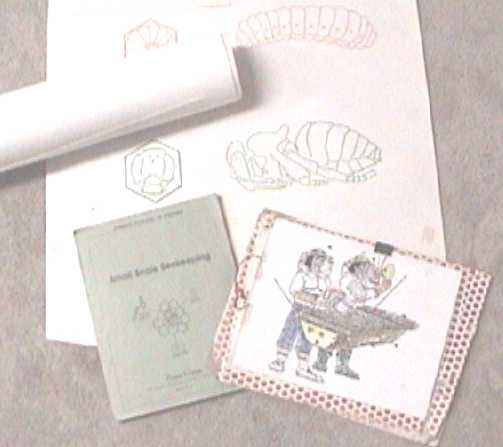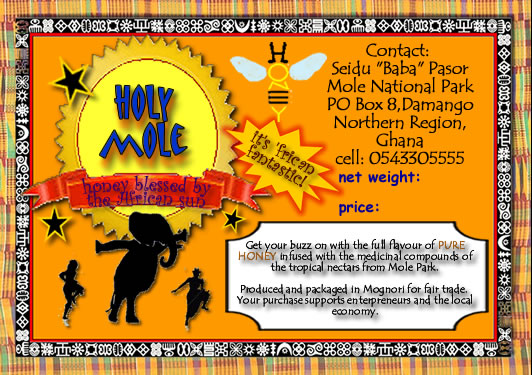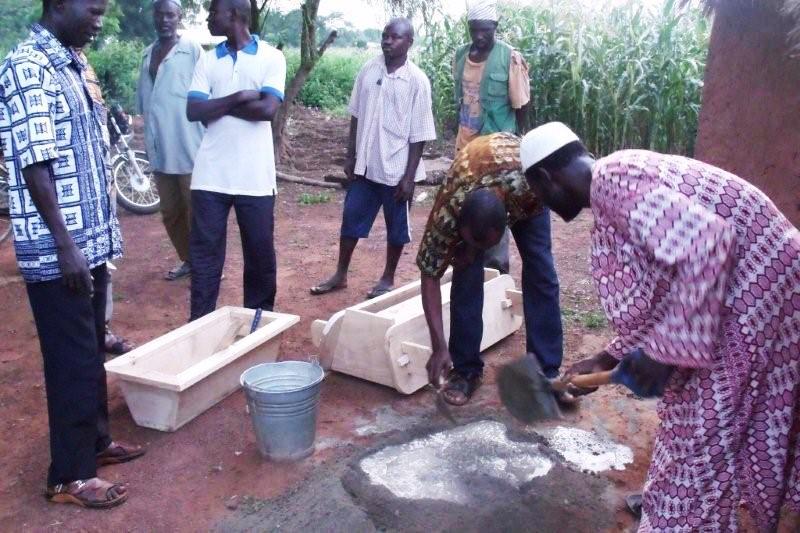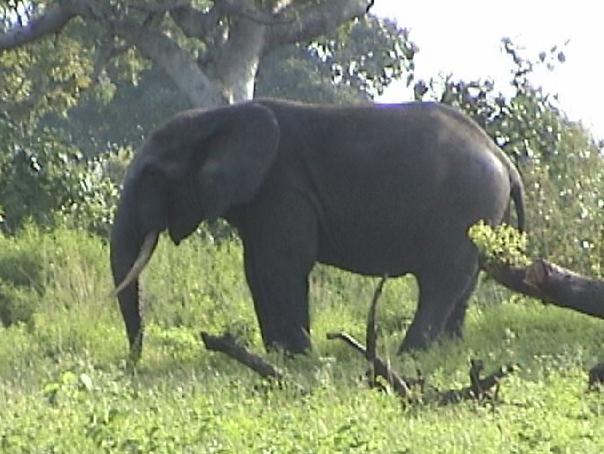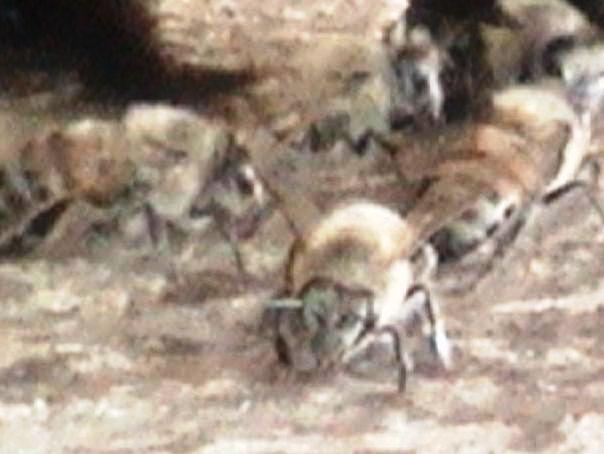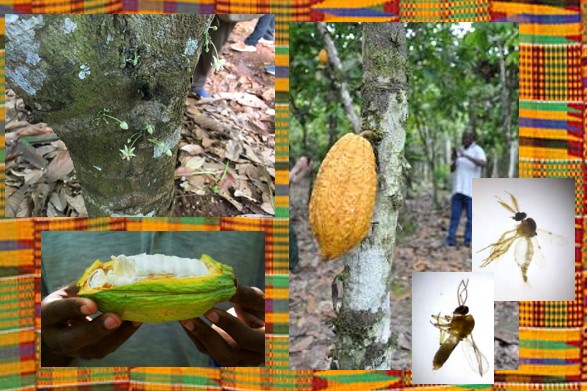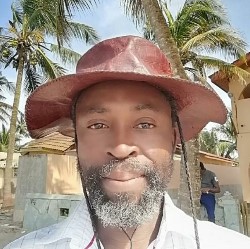• |
donation options | |
• |
bees for babar index | |
• |
guiding principles | |
• |
photos and background | |
• |
publications and resources | |
• |
videos | |
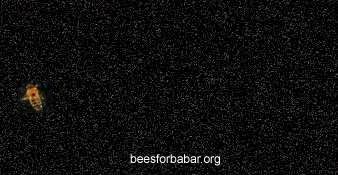 |
||
Bees for Babar (BfB) has enough of a nest egg to expand beyond Mole Park.

Thanks to generous donations, BfB has a nest egg to expand into a park beyond Mole.
Click on text or images below to jump to corresponding page:
Upcoming activity plans... |
|
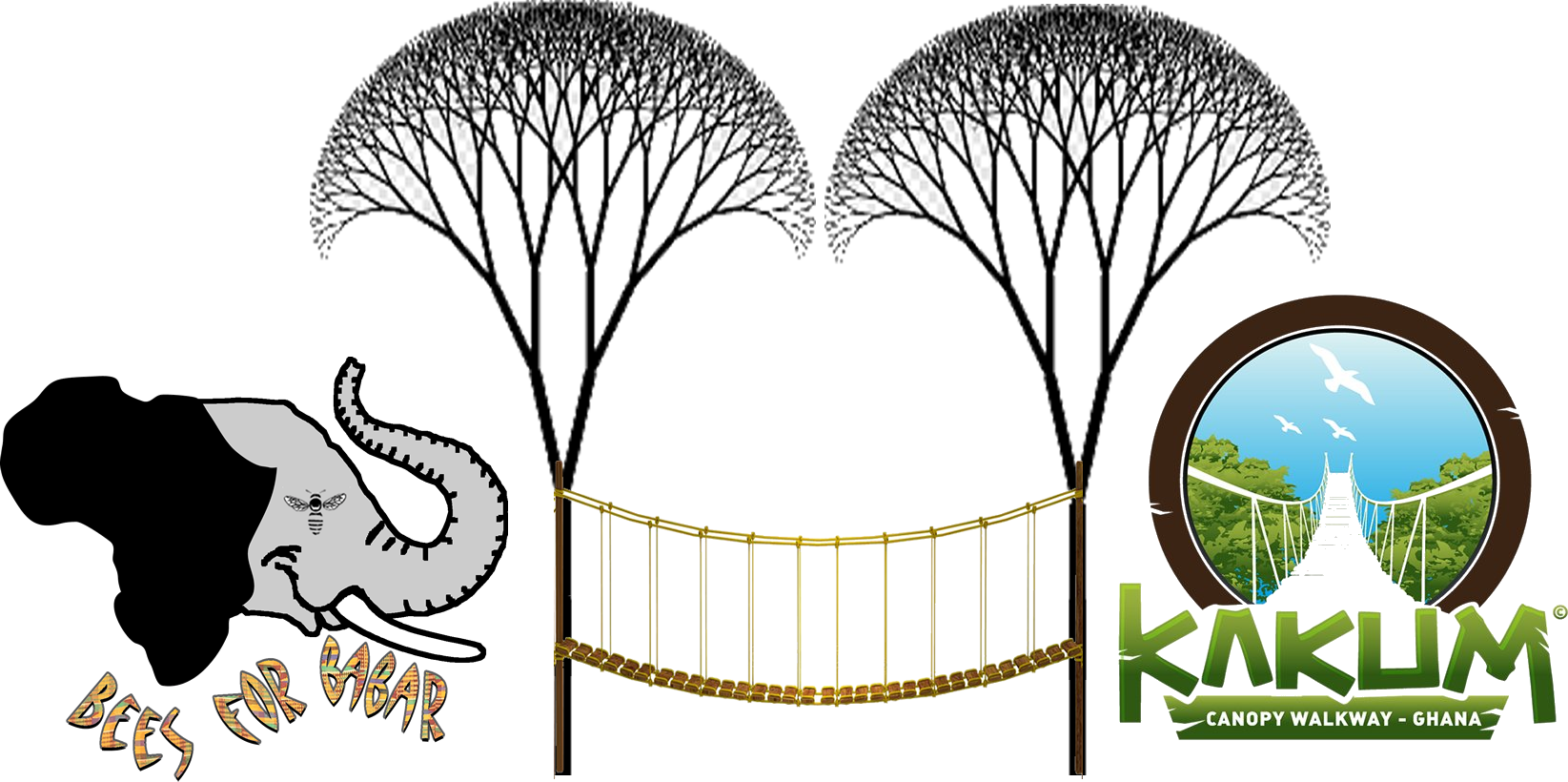 |
Kakum National Park seems an appropriate choice for BfB expansion plans. |
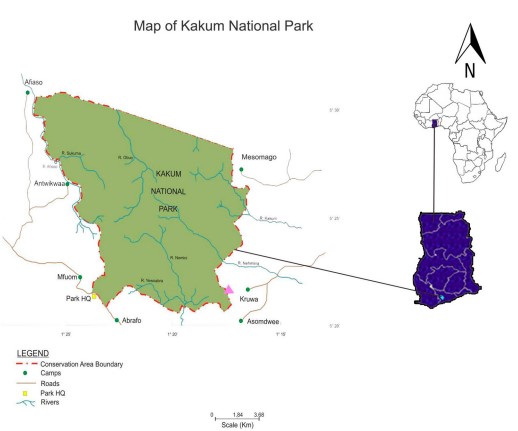 |
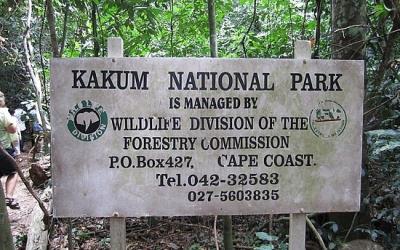 |
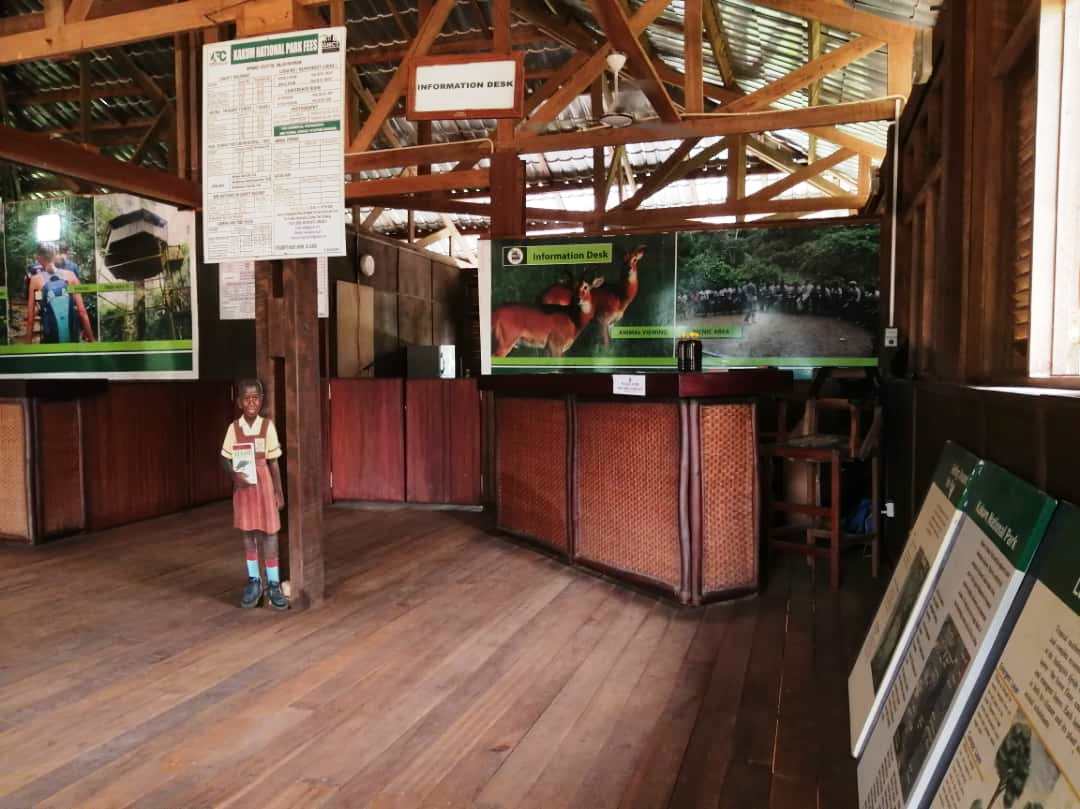 |
Kakum is a well-known tourist spot with a threatened forest elephant population. From Samuel Annan-Riverson, Park Manager, Kakum Conservation Area: "Kakum has an isolated elephant population of about 150 individuals. It is surrounded by a mosaic of farms such as cocoa, oil palm, rubber and mixed crops. Annual raiding of crop by elephants from the park has been one of our major management challenges and the key cause of human wildlife conflicts. Interventions such as the chilli pepper fences have been adapted to mitigate the occurrence of these raids. Beehive fencing for elephant crop raiding control was initiated some three years ago as an additional technique with other socio-economic and ecological benefits with a beekeeping project for 15 persons to benefit from 375 hives, harvesting equipment and training." |
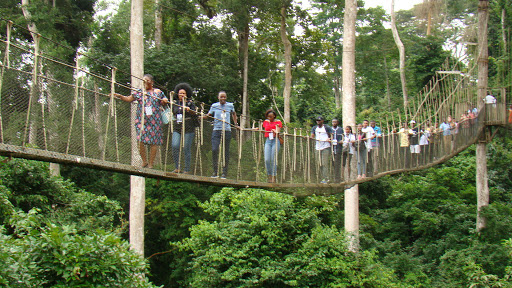 |
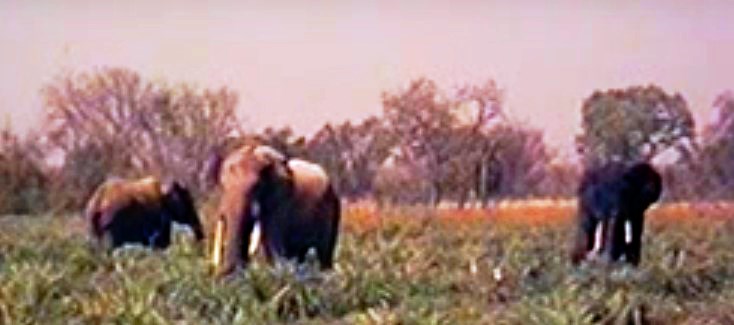 |
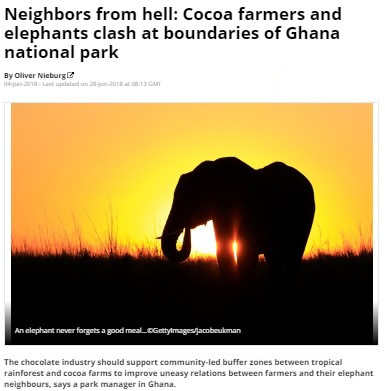 |
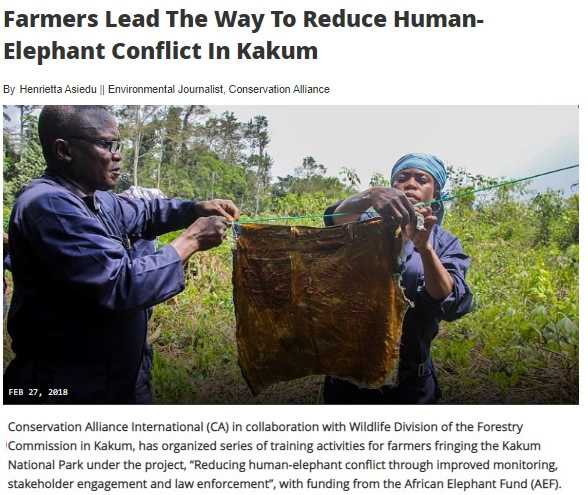 |
Human-elephant conflicts are an emerging issue in communities near Kakum Park, as highlighted in recent news articles. |
|
 |
Pepper-greased cloth-lines offer some limited protection for farmers. Elephants avoid contact with the chili-soaked rope fences and pepper-infused cloths hung from them. |
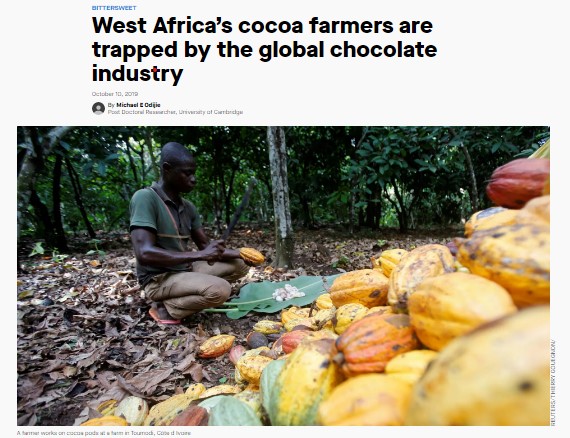 |
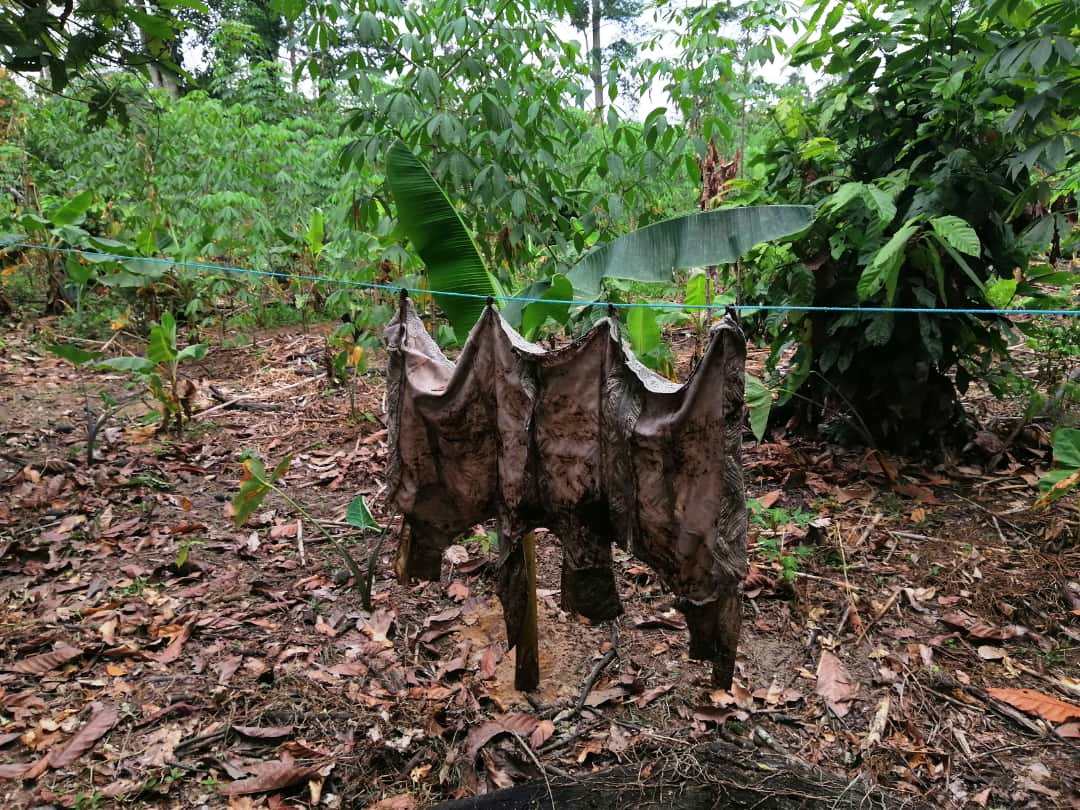 |
Small-holding cocoa farmers are prey to typical cash-crop vulnerabilities & are particularly hard-hit if elephants target the pods, which they prize, as it is the farmers' chief source of income. |
|
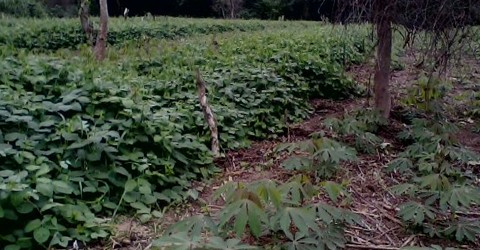 |
|
Intercropping with cassava, maize, banana, cocoyam &, peppers has been somewhat successful in luring elephants from cacao plantations... but does not eliminate HEC's-- the cocoyams and plantains pictured below were damaged by elephants in the previous growing season. |
|
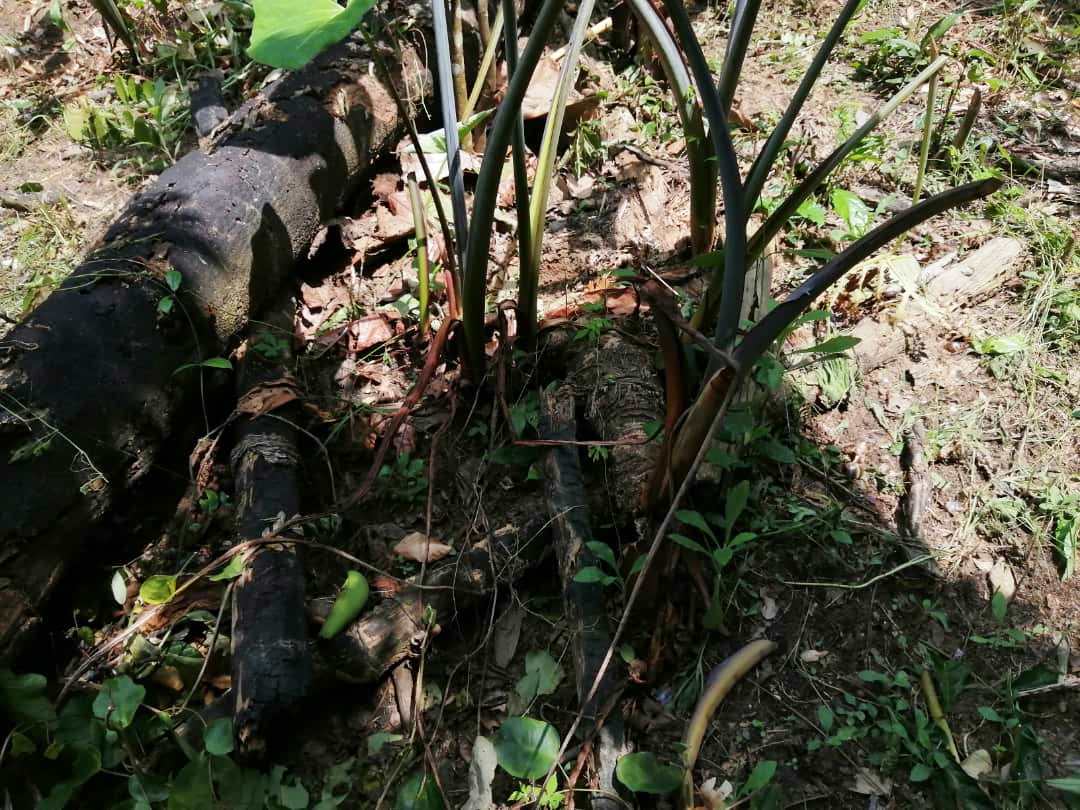 |
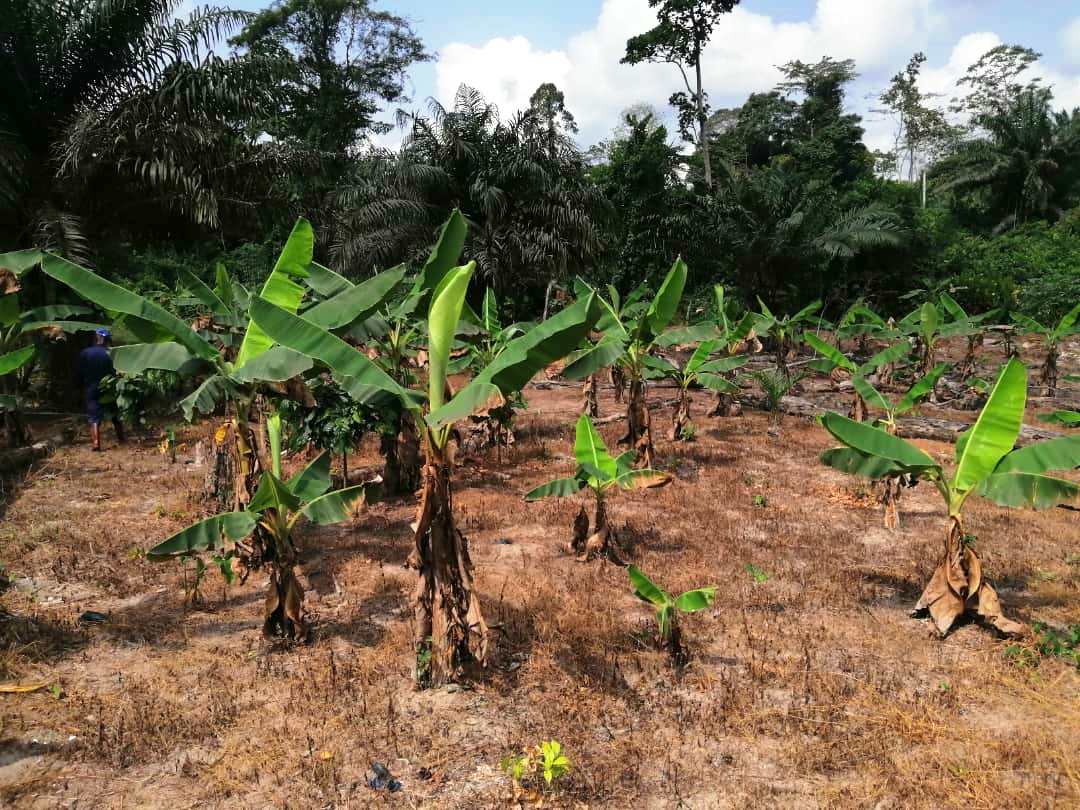 |
|
The pollination benefits of beekeeping would not impact cocoa production directly as "chocolate trees" are pollinated by midges & the most common intercrops are not dependent on insect pollination . |
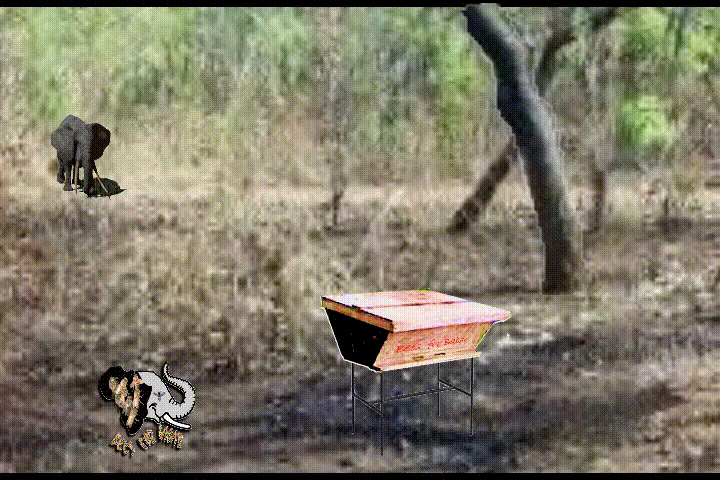 |
|
Erecting beehive fences on cocoa farms’ boundaries with the protected park can contribute to protecting crops from incursions by elephants tempted out of the park by the succulent plants. |
|
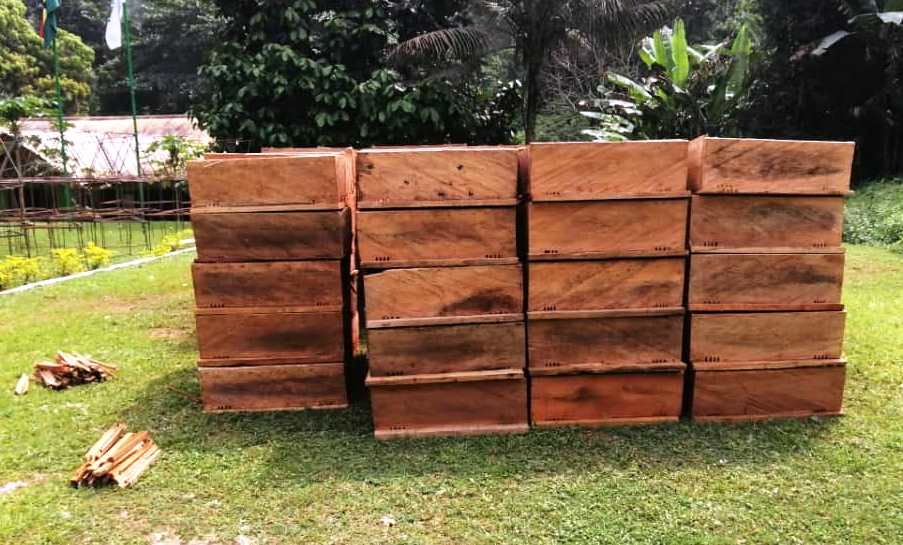 |
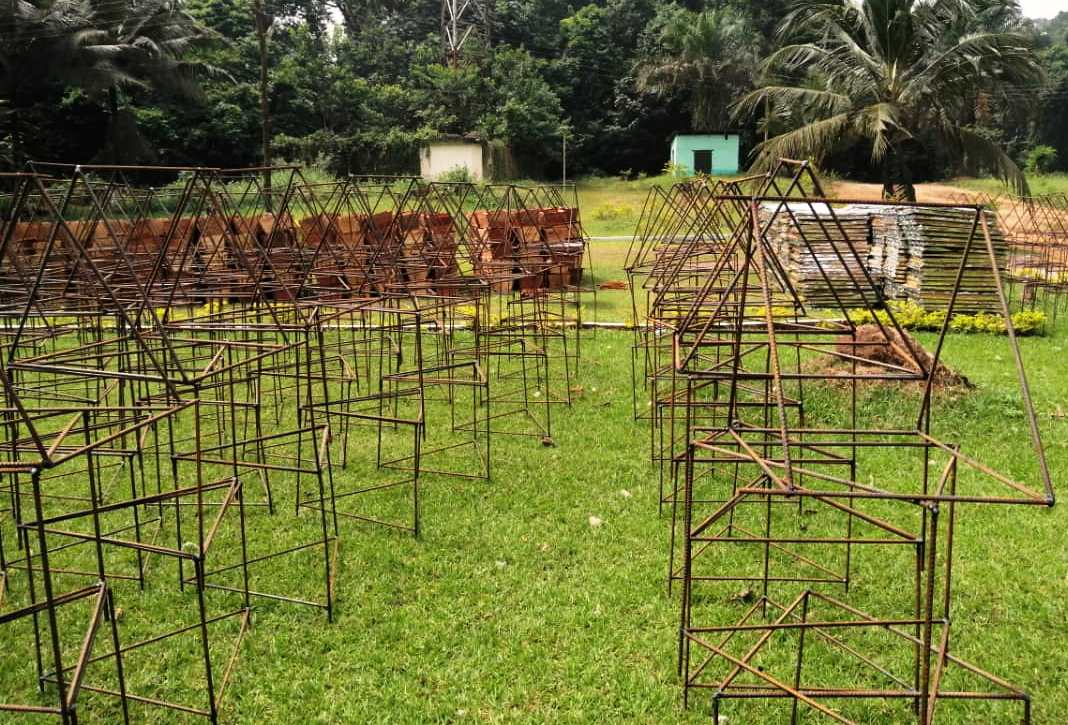 |
Beehive fencing to discourage elephant crop raiding control was piloted in an initiative between Kakum Park and the NGO Conservation Alliance in 2017 for potential socio-economic and ecological benefits. This initiative faced some technical challenges to which BfB hopes to contribute a solution by supporting expert training and management assistance. |
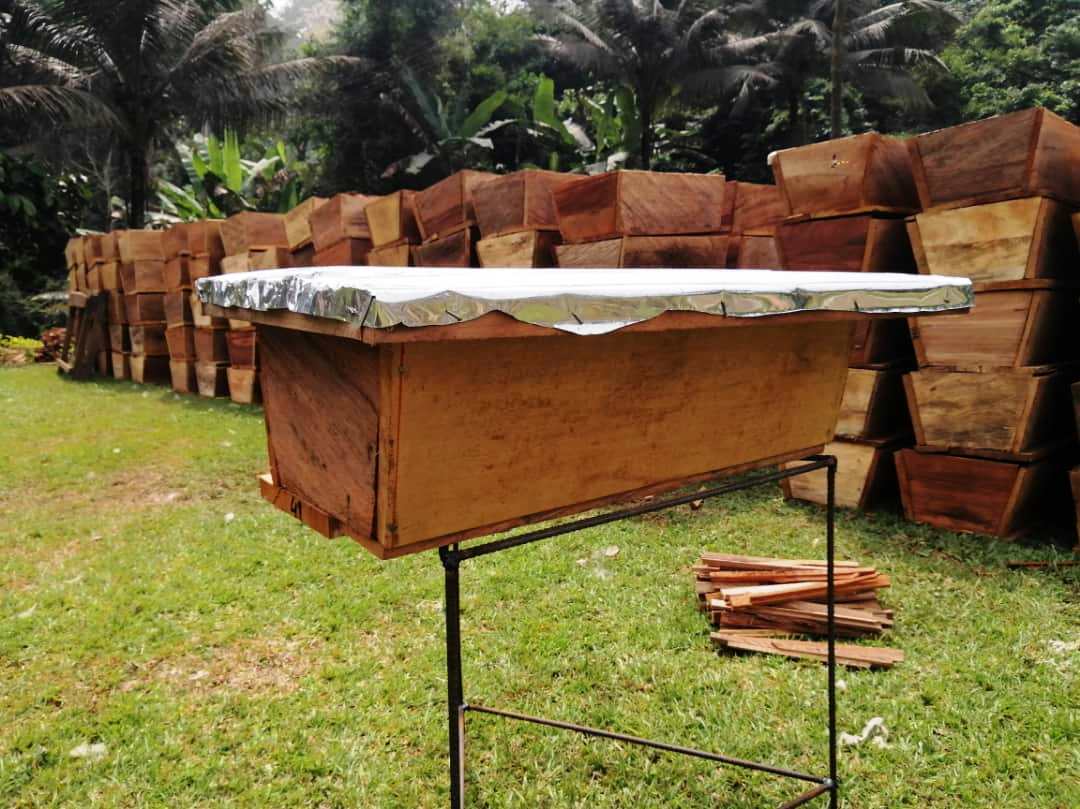 |
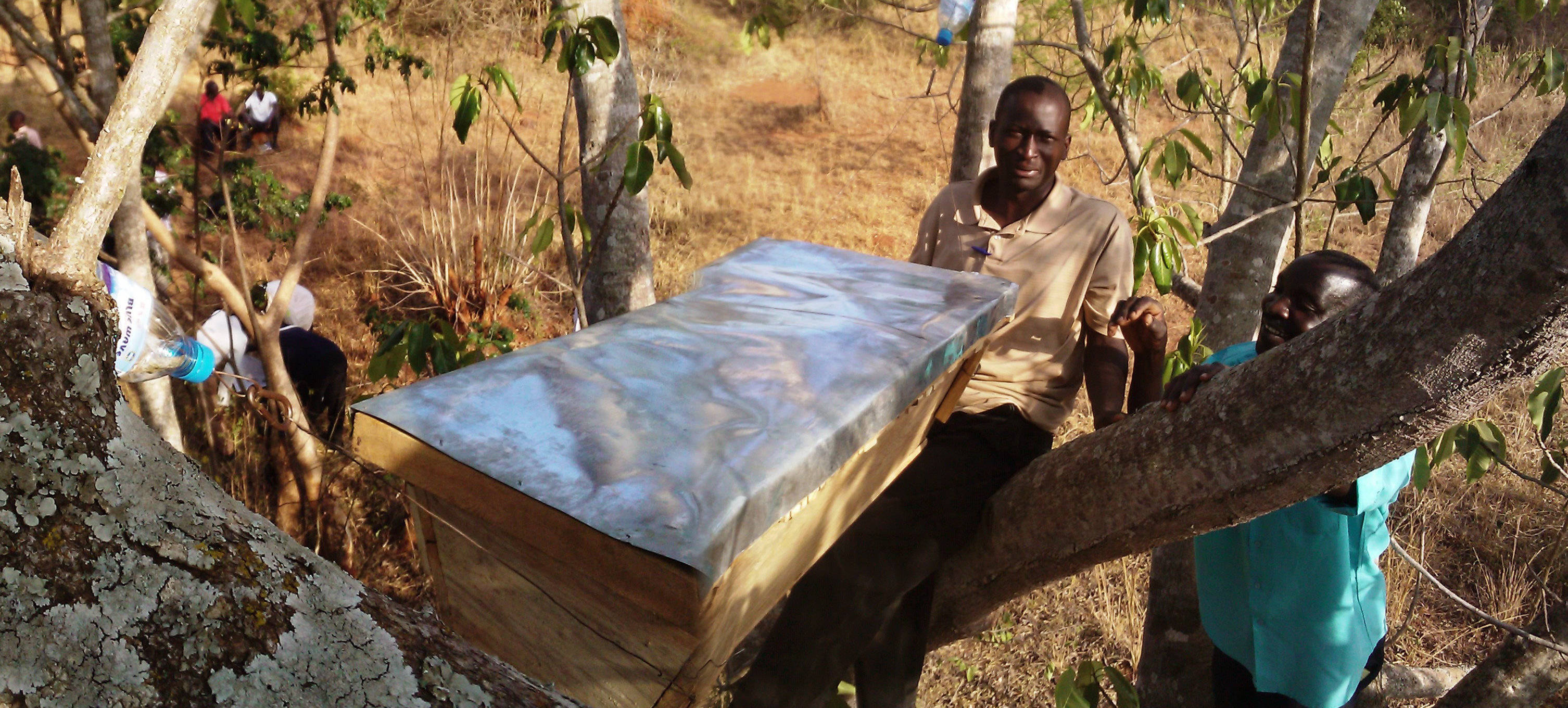 |
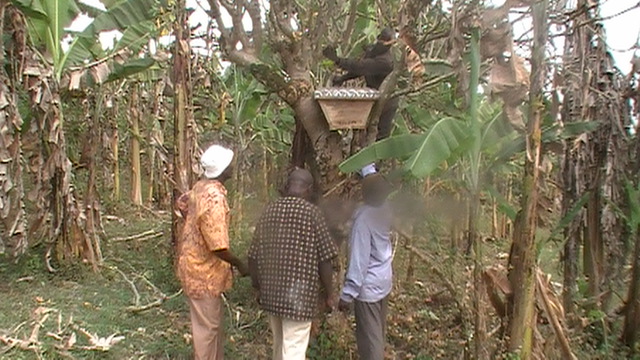 |
Kakum’s past challenges in getting hives colonized reminds that, to encourage occupancy, after rubbing the interior & entrance with beeswax & lemon grass, swarm traps or bait hives should be placed about 3 meters high. Kids can be enlisted to build & set out traps rubbed down with lemon-grass (such as those shown below made from rafia canes). The kids can sell occupied traps to beekeepers who can, at night, wrap the traps in netting to carry away to install bees in KTBH's. |
|
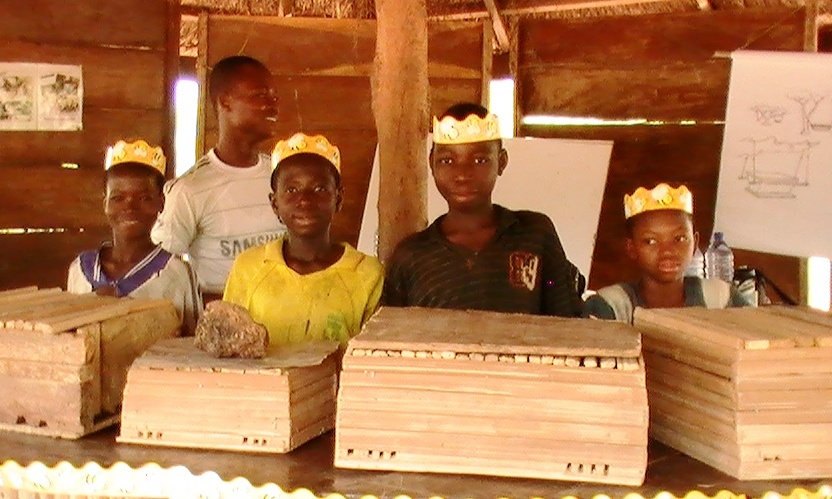 |
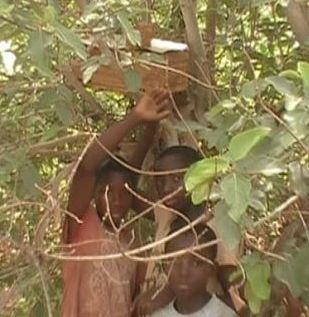 |
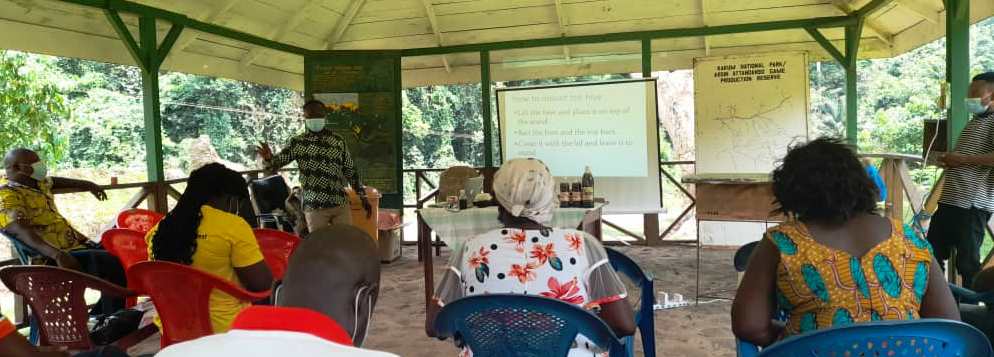 |
|
Kakum Park is currently working to train 15 beekeepers who have received KTBH's (above). BfB hopes to build on & contribute to this existing program. |
|
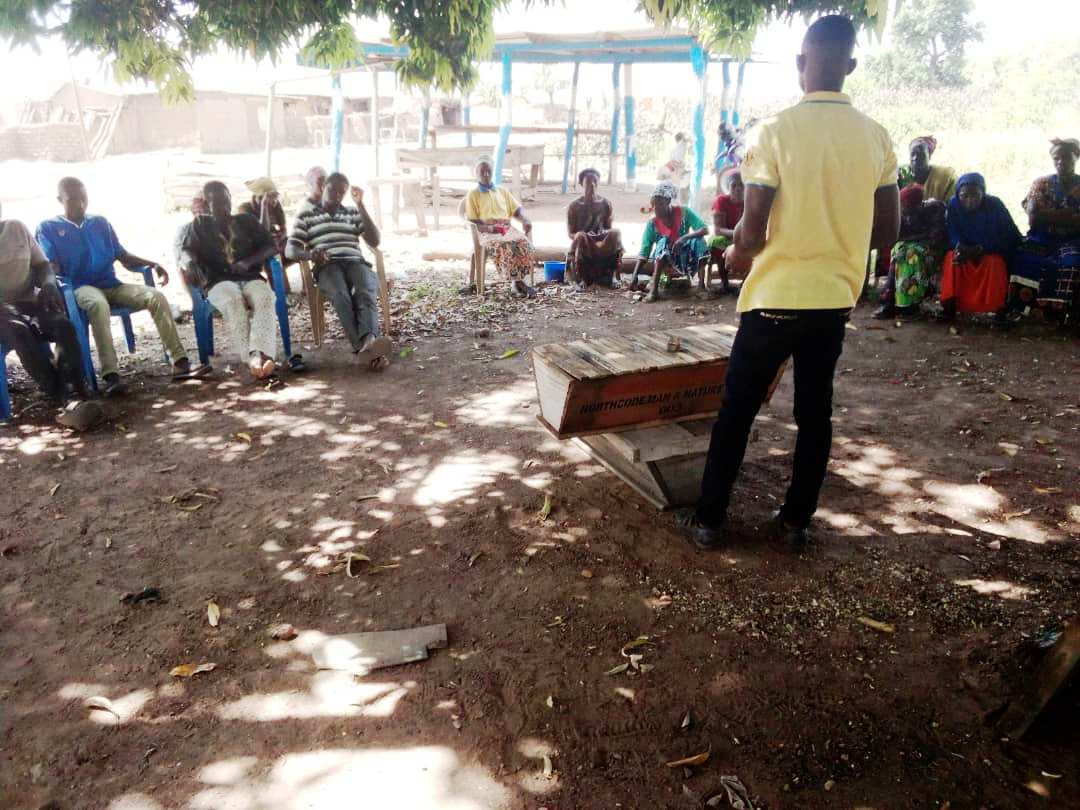 |
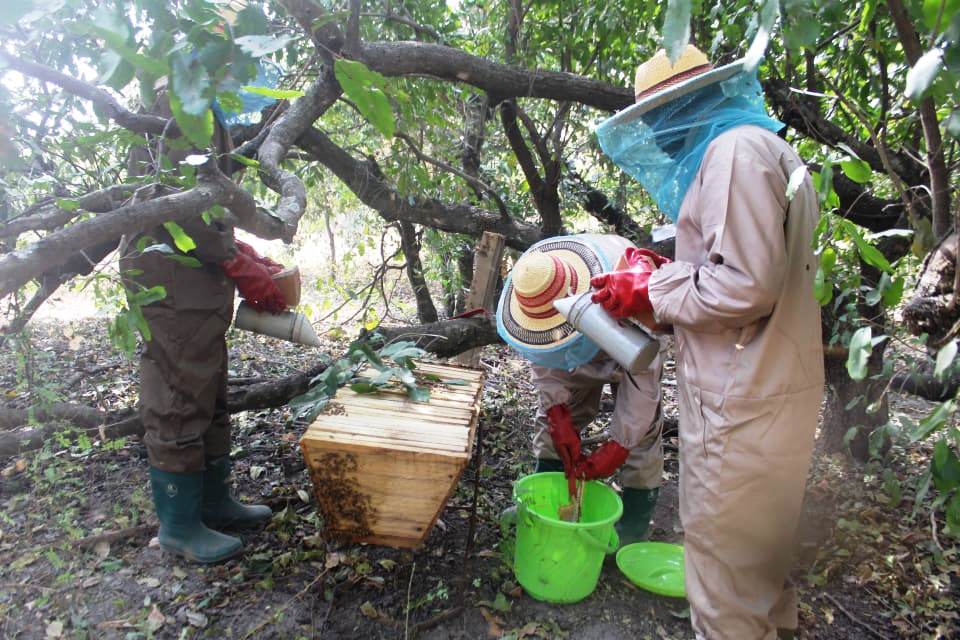 |
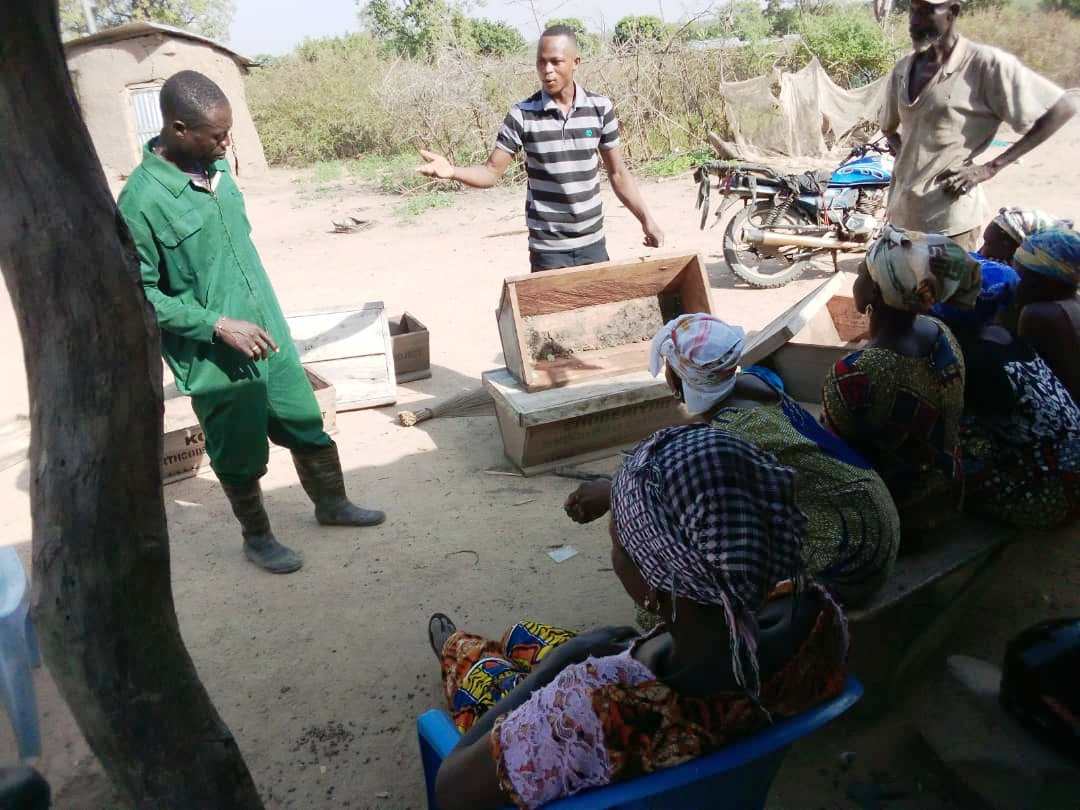 |
Preliminary communications have begun, in early 2021, to determine how best to proceed with hive distribution and associated training sponsored by BfB to dovetail with current activities in Kakum. In 2020 BfB trainer Seidu Pasor helped conduct similar training (shown above and left) in the Mole area. That training was sponsored by A Rocha-- a development NGO with which BfB has collaborated in the past. |
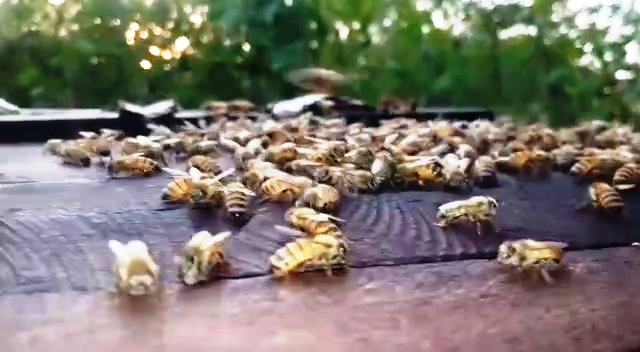 |
|
Bees for Babar looks forward to encouraging conditions in which there is space for humans & elephants-- & bees-- to coexist, ideally in a system that provides mutual benefits to each species. |
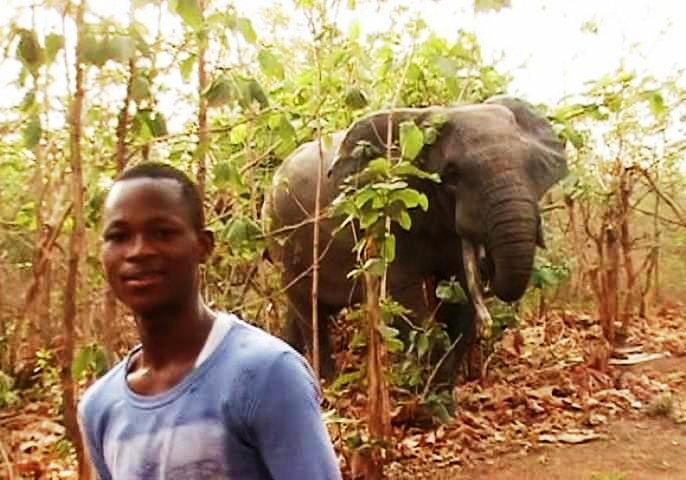 |
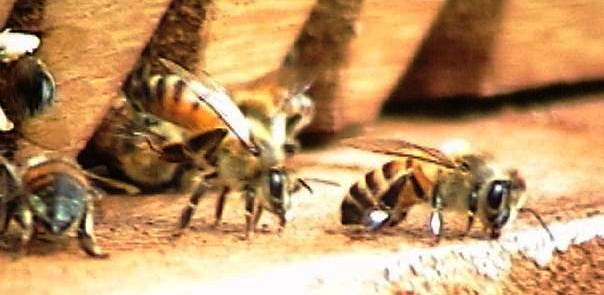 |
 |
Thanks to Ellis Noble of Ellis Noble Coffee Processing Enterprise for his valuable assistance in conducting preliminary inquiries and ground-truthing related to the BfB Kakum expansion. |
|

